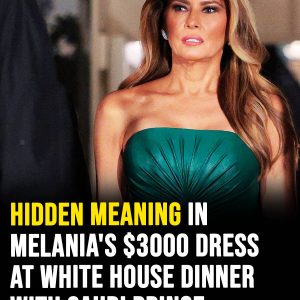It all comes down to something called serial numbers. Every $1 bill — and every piece of U.S. currency — carries a unique string of numbers printed on it. Most people glance at the serial number once, maybe to check if it’s a series they recognize or to satisfy curiosity, and then never look at it again. But collectors and enthusiasts pay very close attention to these numbers because some combinations are considered “fancy” or extremely rare. And if you happen to have one of these rare combinations in your wallet, it could make you far more than the single dollar it represents.
What Makes a Serial Number “Fancy”?
A website called CoolSerialNumbers.com is currently at the forefront of this unusual hobby, collecting bills with what they call “fancy serial numbers.” These are bills where the numbers line up in ways that are aesthetically pleasing, mathematically intriguing, or unusually rare. For example, a serial number with repeating digits, symmetrical patterns, or sequences that resemble palindromes is highly sought after by collectors.
Here’s a breakdown of some of the patterns that could make your $1 bill surprisingly valuable:
-
7 Repeating Digits in a Row: Bills with serial numbers like
09999999,18888888, or19999999fall into this category. The repetition makes them instantly recognizable and highly collectible. -
7 of a Kind: This is a step beyond regular repetition. Serial numbers such as
00010000,00090000, or90999999feature seven identical digits, which are much harder to come across. -
Super Radars: These are mirror-image patterns, like
01111110,10000001, or80000008. The symmetry creates a visually striking pattern that collectors love. -
Super Repeaters: Numbers like
67676767fall into this category. They have alternating digits that repeat in a predictable sequence, making them unusual and appealing. -
Double Quads: Serial numbers like
11110000,44440000, or88880000feature blocks of repeated digits. These are especially attractive to collectors who hunt for patterns that stand out from the random sequences of most bills.
Collectors prize these patterns not just because they look neat, but because they are relatively rare. The odds of coming across one in everyday circulation are low, which is exactly what drives up the value. A bill that might be worth $1 at the grocery store could fetch hundreds or even thousands of dollars in the right hands.
Why Some People Collect These Bills
It might seem odd to think that someone would pay hundreds of dollars for a crumpled $1 bill. After all, it’s still just paper, right? But for collectors, it’s about rarity, aesthetics, and the thrill of the hunt. Fancy serial numbers are like limited-edition prints in the world of currency. Owning one is a badge of honor for collectors, and it’s a way to diversify a personal collection beyond coins and older bills.
Some collectors, like those using CoolSerialNumbers.com, maintain extensive Want Lists where they outline the exact serial numbers they are hunting for. These lists are constantly updated, reflecting which numbers are in demand and which could command higher prices. If you happen to have one of the numbers on the list, you’re in luck — you could make a significant profit by selling or trading it.
For instance, a bill with a pattern like 11110000 might be worth anywhere from $50 to $200 depending on its condition and the demand among collectors. A rare super radar like 10000001 could be worth even more, sometimes fetching several hundred dollars. And the rarer the pattern — especially those with symmetrical or repeating sequences — the higher the potential value.
How to Spot a Valuable $1 Bill
If you want to check your wallet for potential treasures, here are some practical tips:
-
Look at the Serial Number Carefully: Don’t just glance. Examine the numbers to see if they match any of the patterns described above. Symmetry, repetition, and sequences all matter.
-
Check Both Bills in Circulation: Sometimes, bills are printed in series, so if you have multiple $1 bills from the same batch, there might be another fancy serial number hiding somewhere.
-
Consider Condition: The better the condition, the more a collector will likely pay. Crisp, clean bills fetch higher prices than wrinkled, torn, or heavily worn bills.
-
Research and Compare: Websites like CoolSerialNumbers.com and Numismaclub list current values for specific serial number patterns. Cross-reference your bill to get an idea of what it could be worth.
Even a quick glance could reveal a hidden gem. For example, you might spot a bill with a super radar pattern and think nothing of it — until you check online and realize it could be worth hundreds. It’s the kind of discovery that turns an ordinary day into a surprising windfall.
Why This Matters More Than You Think
In a world where digital payments dominate and $1 bills seem almost obsolete, it’s fascinating to realize that these little pieces of paper still hold value beyond their face amount. They are collectibles, small pieces of art, and sometimes even investment opportunities. While you probably won’t retire off a single $1 bill, a handful of rare bills could add up to a substantial sum, especially if you have the right serial numbers.
For casual collectors, spotting a fancy $1 bill can be a fun hobby. For serious collectors, it can be a way to invest in something tangible and unique — much like coins, stamps, or rare memorabilia. And for the average person, it’s a reminder that even everyday objects might hold hidden surprises if you take a closer look.
A Little Patience Goes a Long Way
Many of these bills are still in circulation, meaning they could turn up in change at the grocery store, under couch cushions, or tucked into wallets just waiting to be discovered. Unlike other collectibles, you don’t necessarily need to buy them — sometimes, they find you. The thrill is in the hunt and the chance discovery.
And the best part? It doesn’t take expertise to get started. All you need is curiosity, a little patience, and a willingness to examine your everyday bills more closely. Even if you only find a few patterns that aren’t worth much, it’s still fun to see the hidden order in what seems like random numbers.
The Takeaway
So, next time you reach into your wallet, pause for a moment. That crumpled $1 bill might be more than it seems. Check the serial number, compare it to the patterns collectors are after, and see if you could be holding onto a hidden treasure.
It’s incredible to think that something as ordinary as a single dollar bill could actually make you a significant amount of money. It’s a reminder that value is sometimes hidden in plain sight, waiting for someone willing to notice it.
Whether you decide to keep your fancy bills, trade them, or sell them to collectors, one thing is clear: $1 bills are more than just money. They’re a fascinating glimpse into printing, pattern-making, and the human love for rare and unique objects.
So go ahead — dig into that wallet. Today might just be your lucky day. You might be sitting on a fortune without even realizing it.





